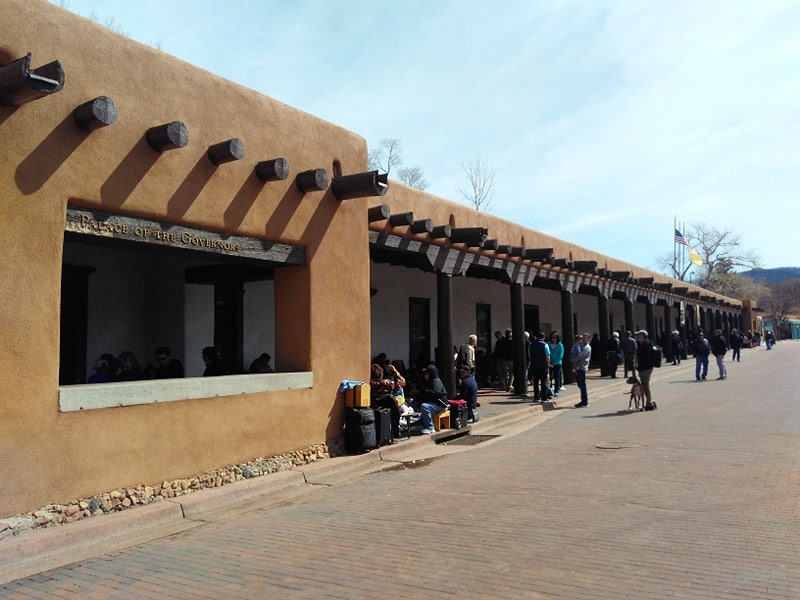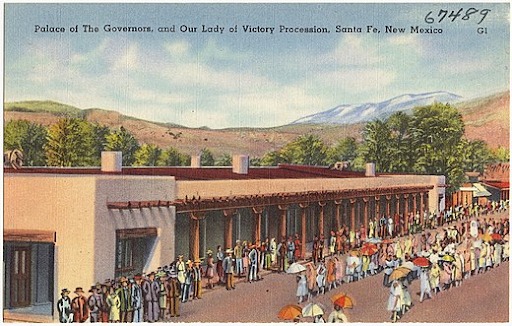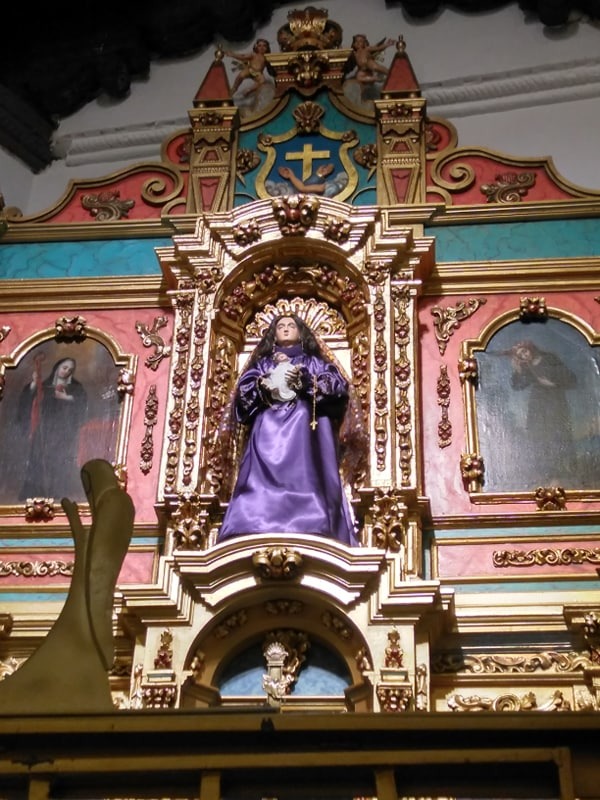
The late 17th century saw drought, increased nomadic raiding, and religious repression for Rio Grande Puebloan peoples. The arrest of forty-seven Pueblo religious leaders was the last straw. After planning his rebellion for five years, Popé and the Rio Grande Pueblo warriors converged around Santa Fe, but not before executing twenty-one of the thirty-three Franciscan missionaries in New Mexico.
The Palace of the Governors in Santa Fe was built in 1610 with the rest of the early town. It served as the governing seat of New Mexico from 1610 to 1886.
The arrest of forty-seven Puebloan spiritual leaders by Governor Juan Francisco Treviño in 1775 exacerbated the deepening rifts between the Pueblo people and the Spanish colonial administration in New Mexico. The Pueblo Revolt, started by one of the forty-seven leaders released at arrowpoint by Governor Treviño, started in 1680 and quickly spread through the countryside. Churches and haciendas were burnt to the ground, and Pueblo armies quickly reached Santa Fe.
The Pueblo warriors besieged the Palace of the Governors. Governor Antonio de Otermin led a desperate sally out of the Palace which Pueblo forces, under Juan, a Tano man sporting a Spanish leather jacket, arquebus, sword, and dagger, rebuffed. As the Rio Grande Pueblo numbers swelled with reinforcements from the northern pueblos, the situation began to look more and more grim for the Spaniards barricaded in the Palace of the Governors. After five days of siege, running dangerously low on water and food supplies, Otermin ordered another charge, which took the Pueblo warriors by surprise. The previously cornered Spaniards were able to rout enough of the Pueblo force to escape the city the next day.
Two Spanish groups, one from Santa Fe and another that hid in the Isleta Pueblo (who did not participate in the revolt) headed by the lieutenant governor of New Mexico, met at Socorro, New Mexico, on September 6, 1680. Otermin had Alonso Garcia, his lieutenant governor, arrested for not assisting Santa Fe in its time of need, but released him upon hearing the official’s story, which included being informed that everyone up north was already dead. The defeated Spanish then headed to El Paso and were expelled from New Mexico for the next twelve years, ending the first Spanish occupation of New Mexico.
Diego de Vargas retook the Palace of the Governorsduring his reconquest of New Mexico, and served as his government’s seat. Neither the Mexican nor early American period saw a new capitol building until 1886. The Palace served the public as the New Mexico History Museum between 1909 and 2009. The state then built a larger building next to it to house the museum collections, and the Palace of the Governors itself is now only part of the museum. The building saw many iterations of remodeling and change during its later periods. A particularly dramatic episode followed the popularity of the Pueblo Revival style, which resulting in the complete transformation of the historic Santa Fe area.
Images


https://www.digitalcommonwealth.org/search/commonwealth:xs55mr435
